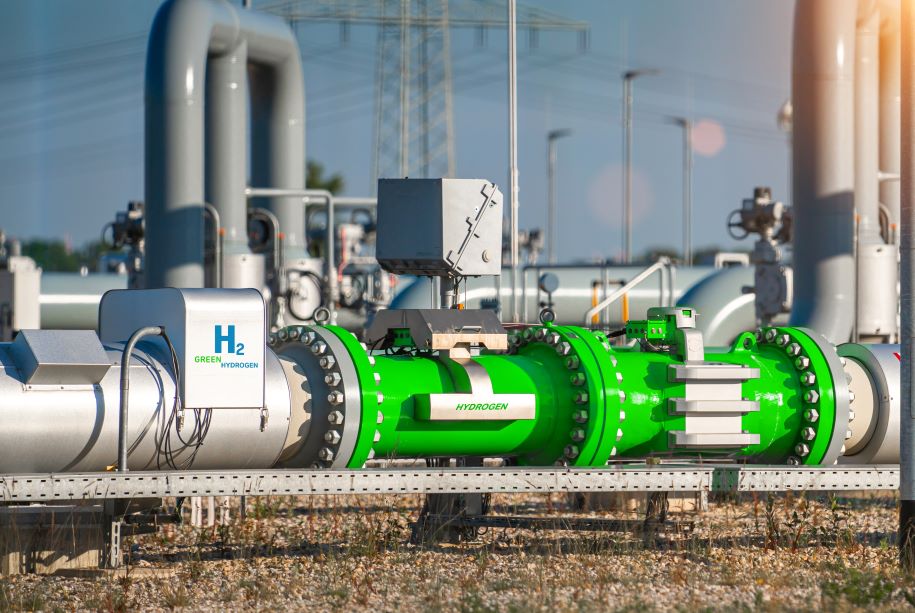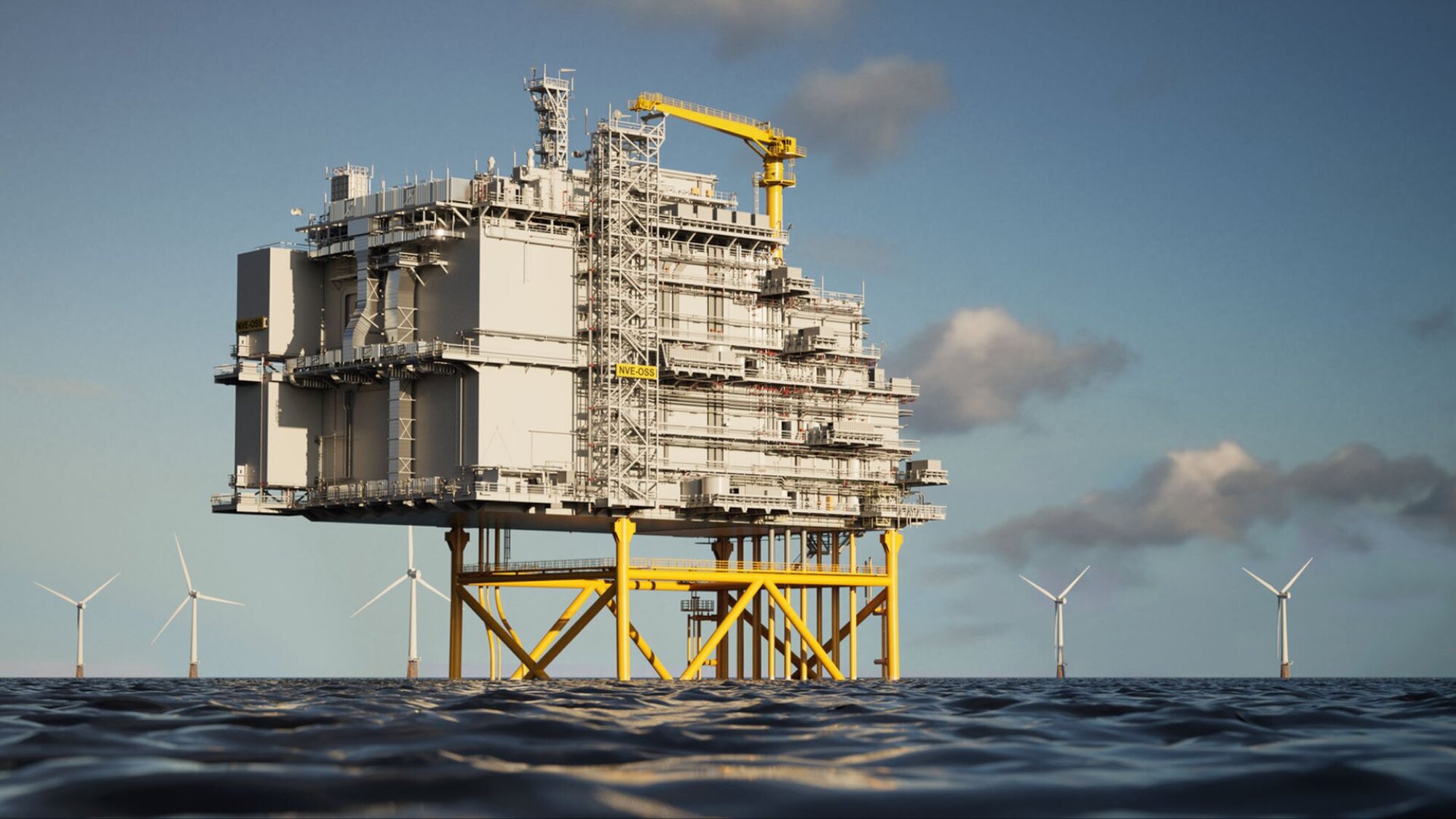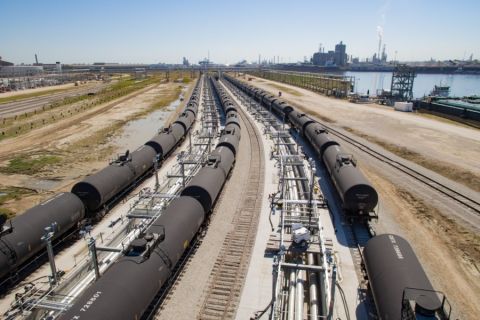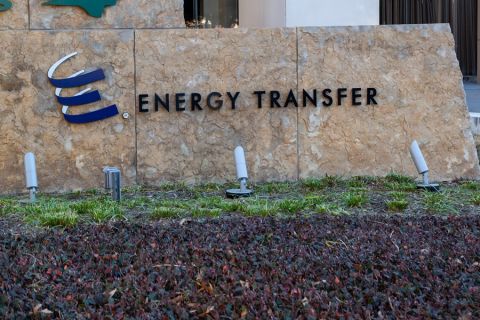Virginia-based utility Dominion Energy partnered with Virginia State University to test a lithium-ion battery alternative with longer duration discharging power, Dominion said on Nov. 16.
Battery storage today is mostly limited to four hours or less; however, technology tested at the university will use a technology that can discharge energy for up to 10 hours.
Dominion Energy, which is developing the massive 2.6-gigawatt (GW) Coastal Virginia Offshore Wind project, has been active in the battery storage space as the company aims to achieve net-zero CO2 and methane emissions from its power generation and gas infrastructure operations by 2050 while helping the U.S. lower its emissions footprint. Battery storage is seen as key to providing grid stability as the use of intermittent renewables rise.
The latest project was among several proposed to the Virginia State Corporation Commission (SCC) in September. Other technologies include one that can discharge energy for up to 100 hours, the company said.
“These projects could be gamechangers for how we store energy and deliver it to our customers,” Ed Baine, president of Dominion Energy Virginia, said in a news release. “With longer-duration batteries, we can store energy from renewables for longer periods of time so it’s available when our customers need it the most. We're thrilled to partner with Virginia State University on this cutting-edge project.”
If approved by the Virginia commission, the energy storage project with Virginia State University will provide backup power for the university’s multipurpose center by year-end 2027. As part of the project, which also serves as a teaching tool for students, California-based EnerVenue will manufacture a 1.5-megawatt (MW) battery that will be installed on the university’s Ettrick campus in Chesterfield County, Dominion said.
EnerVenue’s Energy Storage Vessels use metal-hydrogen technology, similar to technology used by the aerospace industry that can discharge energy for up to 10 hours.
Two other technologies—iron-air batteries developed by Form Energy and zinc-hybrid batteries developed by Eos Energy Enterprises— will be tested in Henrico County, Virginia.
Dominion Energy, which is developing a battery storage facility at the Dulles International Airport, also operates battery storage sites in Powhatan, Hanover, New Kent and Chesterfield counties.
Here’s a look at other renewable energy project news this week:
Mirrors, AI, Solar Offer ‘Killer Combinations’ for Energy Storage
Tug of War Between Energy Transition, Growing Energy Needs
DOE’s $8B Hydrogen Hub May Kickstart Venture Capital, Corporate Investments
Exxon Mobil Aims to Start Lithium Production by 2027
US Gives Battery Sector up to $3.5 Billion Boost
Get Ready for More Consolidation—in Renewables, Investment Banker Says
Engie, WestRock Sign Agreement to Add Renewable Energy to US Grid
Hydrogen
LS Power, Monarch Energy Form Hydrogen Partnership

New York-based LS Power, an energy infrastructure manager, teamed up with Monarch Energy to develop green hydrogen projects across the U.S., according to a Nov. 16 news release.
With the formation of Clean Hydrogen Fuels, Monarch will put its hydrogen skillsets to use while leveraging LS Power’s platform of expertise in project development, commodities, environmental attribute and credit risk management, power marketing, public policy and market development and project finance, the release states.
As part of the effort, LS Power said it plans to invest up to $400 million into Monarch’s projects. LS Power, which will have a seat on Monarch’s board of directors, has already provided $25 million in preferred equity financing for Monarch to advance its hydrogen pipeline, move into new U.S. regions and add talent.
“Executing one of the largest pipelines of green hydrogen projects in the U.S. requires access to deep pools of capital, diverse skillsets, and a commitment to innovation,” Monarch Energy’s CEO Ben Alingh said in the release. “LS Power consistently operates at the vanguard of new technologies and exemplifies a brand known for building complex projects at industry-leading scale. Together, we unlock the potential to achieve great outcomes in hydrogen and e-fuels for our customers.”
The partnership was formed as the U.S. aims to boost clean hydrogen production to 10 million tons (MMton) by 2030 to help drive down greenhouse-gas emissions. The production target is 20 MMton by 2040, rising to 50 MMton by 2050.
Okinawa Electric Plans Trial Using Hydrogen at Gas-fired Power Plant
Japan’s Okinawa Electric Power plans to start co-firing hydrogen on a trial basis at a commercial gas-fired power plant in a bid to reduce CO2 emissions, its president said Nov. 17.
The utility aims to achieve a hydrogen co-firing rate of 30% at the 35-MW unit of its Yoshinoura thermal power station in the southern island of Okinawa. The trial is scheduled to run until sometime between April and September.
“The establishment of hydrogen co-firing technology is a key initiative that can help us achieve two goals: expanding renewable energy and slashing CO2 emissions,” President Hiroyuki Motonaga told reporters.
The company plans to use the hydrogen byproduct of local chemical plants as well as compressed hydrogen, it said.
If the trial is successful, the utility will consider co-firing hydrogen on a regular basis, Motonaga said.
More than 90% of Okinawa Electric’s power sources are fossil fuels, mainly coal, and there is no nuclear or hydroelectric power due to geographical and topographical constraints.
The company aims to reduce its emissions by 30% from 2005 levels by 2030 by cutting coal usage and boosting the use of LNG and renewable energy.
Eletrobras Bets on Hydro Power for Clients’ Green Hydrogen Projects
Brazilian power company Eletrobras intends to use its portfolio of hydroelectric power plants to provide large customers with a stable renewable energy source to allow them to produce green hydrogen and e-fuels at competitive costs, the company’s vice president of commercialization said Nov. 14.
Eletrobras will use part of the energy produced by its more than 30 hydroelectric plants throughout the country to serve clients' decarbonization projects, said Italo Freitas in an interview with Reuters. Freitas highlighted that the power source was more stable than wind or solar.
Latin America’s largest electricity company is studying how it will operate in the incipient industry, eyeing potential partnerships to produce green hydrogen and derivates, or just acting as a supplier of the renewable energy needed for the process, the executive said.
“You can have wind power, solar power, but it will inevitably come to hydroelectric power to provide stability) ... And who owns hydroelectric plants in Brazil? Eletrobras,” Freitas said.
Last week, Eletrobras received a renewable origin certification for green hydrogen produced in a pilot project at one of its hydro power plants in Minas Gerais state.
The unit, the first of its kind to start operating in Brazil, has produced about three metric tons of the fuel since 2021. The company has already mapped out other hydroelectric plants that could receive green hydrogen projects, Freitas said.
Renewable Fuel
ADM, Marathon Petroleum Begin Soybean Processing for Renewable Fuels in N.D.
Production has started at the North Dakota soybean processing complex where the resulting oil will be used as feedstock for renewable fuels, Marathon Petroleum Corp. and food processing company ADM said Nov. 14 in a news release.
The two companies jointly developed the $350 million Green Bison Soy Processing facility located in Spiritwood, North Dakota. The facility, which sources its soybeans from local and statewide growers, will produce about 600 million pounds of refined soybean oil annually, all of which will be used by Marathon.
“As we continue challenging ourselves to lead in sustainable energy, our joint venture with ADM not only strengthens our presence in North Dakota, but also gives us the opportunity to collaborate further with a world-class partner as we continue investing in a sustainable, energy-diverse future,” Dave Heppner, Marathon’s senior vice president of Strategy and Business Development, said in the release. “Green Bison Soy Processing’s Spiritwood facility is an important milestone in our ability to source and optimize logistically advantaged feedstock for our growing renewable fuels business.”
Soybeans processed at the facility, the first of its kind for North Dakota, will be used to create renewable diesel. The facility is in the commissioning and startup phase of processing soybeans for meal and oil, according to the news release.
Marathon delivered 2.4 billion gallons of renewable fuels in 2022, according to its latest sustainability report, avoiding nearly 10 million tonnes of CO2 transportation emissions
Solar
SunPower Unveils 1-GW Solar Project for California Apartment Community
Residential solar company SunPower said it plans to install more than 1 GW of solar power at an affordable housing community in Elk Grove, California.
The 2,649-panel system is expected to help save the 387-unit Poppy Grove apartment housing community about $2.7 million over 15 years, SunPower said in a Nov. 14 press release. The apartment community, built by Brown Construction and overseen by UrbanCore Development and E. Smith & Co., spans some 16 acres.
“Solar can effectively provide affordable energy making it a highly valued amenity for affordable housing communities,” Matt Brost, vice president of new homes sales for SunPower, said in a news release. “We remain steadfast in our commitment to provide all Americans access to rooftop solar, no matter their income level or if they rent or own their homes.”
Enbridge Enters JV with EDF Renewables for Ohio Solar Project
Pipeline operator Enbridge Inc. said Nov. 15 it entered a joint venture (JV) with EDF Renewables to construct a solar farm in Madison County, Ohio.
The solar farm, Fox Squirrel, will be built in three phases, initially generating about 150 MW of solar energy when it enters service by year-end 2023. That will rise to 577 MW by year-end 2024.
“Fox Squirrel solar project will benefit the surrounding communities by adding local jobs, generating additional tax revenues for Madison County and will ultimately power approximately 118,000 Ohio homes with renewable energy,” Matthew Akman, executive vice president corporate strategy and president, power, for Enbridge, said in the release.
Enbridge, which has a 50% interest in the JV, said it will invest $149 million in the first phase and plans to reach final investment decision (FID) on the remaining phases throughout next year.
Wind
CIP Begins Constructing 495-MW Wind Farm in Alberta
Copenhagen Infrastructure Partners (CIP) has started constructing the 495 MW Buffalo Plains wind farm in Vulcan County, Alberta, the company said in a Nov. 16 news release, with most of the power going to tech giant Amazon as part of a power purchase agreement.
The wind farm will feature 83 Siemens-Gamesa wind turbines, producing enough power for more than 240,000 homes, CIP said. Amazon has procured 415 MW of Buffalo Plains’ output.
“This premier project demonstrates CIP’s unique ability to execute on large and complex infrastructure projects that will provide local jobs and clean, renewable wind energy for many years to come,” Tim Evans, partner and head of North America for CIP, said in a news release.
Canada-based Borea will be responsible for construction. The project is expected to be fully operational in December 2024, becoming Canada’s largest onshore wind farm.
CIP is among the world’s largest fund managers dedicated to greenfield renewable energy investments. To date, its 11 funds have raised about EUR 26 billion (US$28 billion) for investments in energy and associated infrastructure, according to the release.
Vattenfall Taps Aker for Norfolk Vanguard Offshore Wind Work

Aker Solutions said on Nov. 14 that has landed a contract from Swedish multinational power company Vattenfall for its Norfolk Vanguard East Offshore wind farm in the U.K.
Under the contract, valued between NOK 0.5 billion (US$46 million) and NOK 1.5 billion (US$131 million), Aker will carry out engineering, procurement, construction and installation of the high-voltage, direct-current offshore platform, according to a news release. Aker has partnered with Drydocks World Dubai for fabrication of the topside. The company said the substructure will be fabricated at Aker Solutions’ yard in Verdal, Norway.
The project remains subject to regulatory approvals and FID by Vattenfall.
Aker Solutions said at this stage it will book an order intake reflecting the compensated work that will be performed until the end of second-quarter 2024.
The contract follows a recent award for the Norfolk Vanguard West project, which is part of the U.K.’s Norfolk Offshore Wind Zone development.
NY Offers New Offshore Wind Auction, May Revive Troubled Projects
New York State will issue a new offshore wind solicitation on Nov. 30 with bids due in January 2024, the state government said, in a move that should support the troubled industry.
European energy companies Ørsted, Equinor and BP have taken a combined $5 billion of writedowns on U.S. offshore wind projects that are not even completed, in part because their existing power sales contracts would not cover the cost of building and financing the projects.
That is because soaring inflation, rising interest rates and supply chain problems have led to much higher costs than anticipated.
The new solicitation will be open to all bidders, including those with existing contracts. This would allow the companies to re-offer their planned projects at higher prices and exit their old contracts.
The companies had warned they could cancel the power sales contracts after failing to convince the New York Public Service Commission (NYPSC), the state’s utility regulator, to renegotiate the old contracts at higher prices.
In response to the NYPSC’s decision, New York Governor Hochul announced on Oct. 12 a 10-point plan to help renewable energy firms “overcome recent macroeconomic and inflationary challenges that have impacted the renewable energy sector.”
Those measures included the expedited solicitation for offshore wind and other renewable projects announced Nov. 16.
Hart Energy Staff and Reuters contributed to this report.
Recommended Reading
Canadian Railway Companies Brace for Strike
2024-04-25 - A service disruption caused by a strike in May could delay freight deliveries of petrochemicals.
Enterprise’s SPOT Deepwater Port Struggles for Customers
2024-04-25 - Years of regulatory delays, a loss of commercial backers and slowing U.S. shale production has Enterprise Products Partners’ Sea Port Oil Terminal and rival projects without secured customers, energy industry executives say.
Report: Crescent Midstream Exploring $1.3B Sale
2024-04-23 - Sources say another company is considering $1.3B acquisition for Crescent Midstream’s facilities and pipelines focused on Louisiana and the Gulf of Mexico.
For Sale? Trans Mountain Pipeline Tentatively on the Market
2024-04-22 - Politics and tariffs may delay ownership transfer of the Trans Mountain Pipeline, which the Canadian government spent CA$34 billion to build.
Energy Transfer Announces Cash Distribution on Series I Units
2024-04-22 - Energy Transfer’s distribution will be payable May 15 to Series I unitholders of record by May 1.





